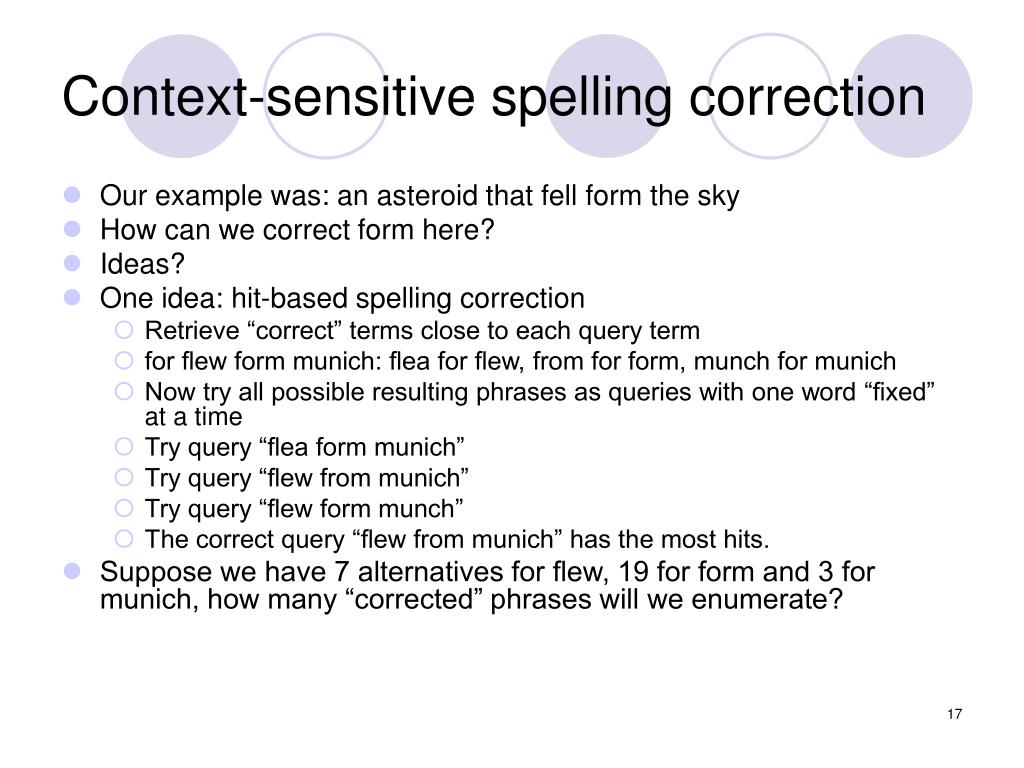

Due to a late process of standardization of Basque, Xuxen is intended as a useful tool for standardization purposes of present day written Basque. The spelling checker/corrector performs morphological decomposition in order to check misspellings and, to correct them, uses a new strategy which combines the use of an additional two-level morphological subsystem for orthographic errors, and the recognition of correct morphemes inside the world-form during the generation of proposals for typographical errors. Because Basque is a highly inflected and agglutinative language, the spelling checker/corrector has been conceived as a by-product of a general purpose morphological analyser/generator. This paper describes the components used in the elaboration of the commercial Xuxen spelling checker/corrector for Basque. I Aduriz, M Urkia, I Alegria, X Artola, N Ezeiza, K Sarasola This article surveys documented findings on spelling error patterns, provides descriptions of various nonword detection and isolated-word error correction techniques, reviews the state of the art of context-dependent word correction techniques, and discusses research issues related to all three areas of automatic error correction in text.A spelling corrector for Basque based on morphology A spelling corrector for Basque based on morphology In response to the third problem, a few experiments using natural-language-processing tools or statistical-language models have been carried out. Some of them were based on detailed studies of spelling error patterns. In response to the second problem, a variety of general and application-specific spelling correction techniques have been developed. In response to the first problem, efficient pattern-matching and n-gram analysis techniques have been developed for detecting strings that do not appear in a given word list. Research aimed at correcting words in text has focused on three progressively more difficult problems:(1) nonword error detection (2) isolated-word error correction and (3) context-dependent work correction. The selected papers showcase a few areas where finite-state methods have less than obvious and sometimes even groundbreaking relevance to natural language processing (NLP) applications. The final selection, consisting of only seven papers that could fit into one issue, is not fully representative, but complements the prior special issues in a nice way. In 2010, the issue received a total of sixteen submissions, some of which were extended and updated versions of workshop papers, and others which were completely new. The current issue on finite-state methods and models in natural language processing was planned in 2008 in this context as a response to a call for special issue proposals. The FSMNLP workshops have become well-known among researchers and are now the main forum of the Association for Computational Linguistics' (ACL) Special Interest Group on Finite-State Methods (SIGFSM).

The findings reveal that the suggested technique can detect DGA domains with a 99.1% and a 0.6% false-positive rate.įor the past two decades, specialised events on finite-state methods have been successful in presenting interesting studies on natural language processing to the public through journals and collections. The proposed system is tested with DNS requests gathered from various sources and seven distinct DGA botnet families. Fifteen associated linguistic features were collected from the domain wordings to determine the degree of randomization, rarity, typing difficulty, and other related factors. The suggested method is based on assessing the linguistic qualities of domain names requested from various hosts.

In this study, a system is suggested that employs machine learning techniques to categorize domain names into malicious or legitimate domain names. As a result, existing defensive methods have a limited chance of detecting and defeating such infrastructure. Using a Domain Generation Algorithm (DGA) to produce a vast set of domain names is one of the most prevalent ways for hiding the identity of the C&C server. Botnets pose a serious threat to network security since they are the source of a variety of malicious behaviors such as information theft, phishing, and Distributed Denial of Service (DDoS) assaults. Botnet is a network of infected workstations that are remotely managed by BotMaster via the command and control (C&C) server.


 0 kommentar(er)
0 kommentar(er)
